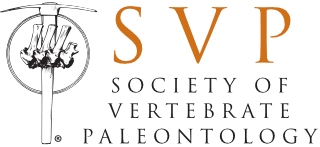Robert Lynn Carroll (1938-2020), known to all as “Bob,” was a long-time member of the Society of Vertebrate Paleontology and served as its President from 1982 to 1983. Already at a young age, Bob had a keen interest in fossils. Following undergraduate studies at Michigan State University, he pursued doctoral research in vertebrate paleontology under Alfred Sherwood Romer at Harvard University. Bob held a two-year postdoctoral fellowship to study Pennsylvanian-age tetrapods from Nova Scotia (Canada). In 1964, he joined the permanent staff of McGill University as a curator at the Redpath Museum and Assistant Professor of Zoology. He was appointed Strathcona Professor of Zoology in 1987. Following his retirement, Bob continued to be active as a researcher until illness prevented him from further work.
Bob’s research initially focused on the evolutionary morphology and interrelationships late Paleozoic tetrapods, especially “amphibians” (in the old sense of the word) and reptiles. Using high-fidelity latex peels, he managed to elucidate the structure of often tiny skeletons that could not be interpreted by traditional means. In the 1970s, Bob worked on a variety of previously poorly known Permian and Triassic reptiles. He became particularly interested in the early evolution of Mesozoic marine reptiles, which appealed to him as a model for major evolutionary transitions. During the last phase of his career, Bob focused mainly on the question of the origin of modern amphibians, drawing on his expertise with late Paleozoic stem amphibians. In addition to studying the development of present-day amphibians for clues to the origin of these animals, he also described superbly preserved Jurassic and Cretaceous salamanders in collaboration with Chinese colleagues.
Aside from his many empirical studies, Bob authored a textbook, Vertebrate Paleontology and Evolution (1987), which has had a profound impact on generations of students. Bob was not content with just elucidating the morphology and phylogenetic relationships of fossil vertebrates. Two of his teachers at Harvard, Ernst Mayr and George Gaylord Simpson, had instilled in him a lifelong interest in evolutionary theory, which informed all of Bob’s research. His book Patterns and Processes of Vertebrate Evolution (1997) explored the evolution of vertebrates in the light of their ideas.
Bob trained numerous graduate students and research fellows over the course of his career, many of whom went on to distinguished careers of their own. He unfailingly supported his students but never forced his own viewpoints on them.
As a scientist and mentor, Bob Carroll embodied the highest standards of the discipline of Vertebrate Paleontology.
